Numerical and Physical Analysis on the Response of a Dam’s Radial Gate to Extreme Loading Performance
Abstract
1. Introduction
2. Materials and Methods
2.1. Applied Load on Radial Gate Spillway
- i.
- Gravity forces (the structural dead load) and hydrostatic force;
- ii.
- The hydrodynamic forces applied to radial gates as a result of the earthquake, wind, severe flood, etc.
2.2. Finite Element Simulation
2.2.1. 3D Model Generation
2.2.2. Material Properties
2.2.3. Modal Analysis
2.2.4. Coupled Acoustic–Structural Analysis
3. Results and Discussion
3.1. Structural Performance
3.1.1. Results of Hydrodynamic and Hydrostatic Forces
3.1.2. Nonlinear Performance Using Incident Wave
3.1.3. Residual Stress and Hysteresis Curve
3.2. Hydraulic Performance
- -
- Cavity lengthwhere is cavity length; is water depth; and is dimensionless cavity length.
- -
- Air entrainment coefficientwhere is air flow rate (m3/s); is discharge through spillway (m3/s); and is air entrainment coefficient.
- -
- Cavity pressurewhere is average cavity pressure (N/m2); is the density of water; is the gravitational acceleration; and is dimensionless cavity pressures.
- i.
- The water jet length in the third aerator compared to the prior aerators experience a substantial increase as a result of the convex arc at the bottom of the chute.
- ii.
- The difference between the atmospheric pressure and aeration channel in the 12,000 discharge is clear in all three aeration systems.
- iii.
- Generally, the velocity and volume of air entrainment in the aerator ducts for 12,000 spillway discharge is much higher compared to 2000 ; particularly in the last aerator.
- iv.
- The air concentration on the floor downstream of the aeration system for the 2000 spillway discharge is relatively high compared to 12,000 , especially in the first aerator.
- v.
- For 12,000 spillway discharge, the cavitation index is critical, particularly in the last aerator.
4. Concluding Remarks
- i.
- The hydrostatic analysis showed an almost acceptable performance for the radial gate however, the hydrodynamic force, as a result of the MCL earthquake, imposes a 72% extra load on spillway compared to hydrostatic force.
- ii.
- To simulate the real condition for the slipway gateway subjected to the hydrodynamic loading, a coupled acoustic–structural analysis was carried out to model the effect of incident waves on the steel structure.
- iii.
- Nonlinear performance evaluation using an impact wave theory, equivalent to an MCL earthquake, revealed a high-stress ratio distribution across almost all of the radial gate components. Additionally, plastic strain in the trunnion (0.014) was classified as a permanent strain. Meanwhile, an average of 100 MPa stress remains in the structure in the aftermath of the impact wave and will significantly decrease the radial gate capacity to resist against secondary waves.
- iv.
- Aeration efficiency mainly depended on the air entrainment rate. The air entrainment rate itself is a function of the upstream Froude number. The results of this research indicate that increasing the Froude number will increase the air entrainment rate on aerator systems.
Author Contributions
Funding
Conflicts of Interest
References
- Dubler, J.R.; Grigg, N.S. Dam Safety Policy for Spillway Design Floods. J. Prof. Issues Eng. Educ. Pr. 1996, 122, 163–169. [Google Scholar] [CrossRef]
- Barfuss, S.L.; Crookston, B.M. Public Safety and Unauthorized Extreme Activities at Spillways. 2018. Available online: https://digitalcommons.usu.edu/cgi/viewcontent.cgi?article=1183&context=ishs (accessed on 29 August 2020).
- Lempérière, F. Dams and floods. Engineering 2017, 3, 144–149. [Google Scholar] [CrossRef]
- Westergaard, H.M. Water pressures on dams during earthquakes. Trans. ASCE 1933, 95, 418–433. [Google Scholar]
- Fenves, G.; Chopra, A.K. Earthquake analysis of concrete gravity dams including reservoir bottom absorption and dam-water-foundation rock interaction. Earthq. Eng. Struct. Dyn. 1984, 12, 663–680. [Google Scholar] [CrossRef]
- Gogoi, I.; Maity, D. Seismic safety of aged concrete gravity dams considering fluid-structure interaction. J. Earthq. Eng. 2005, 9, 637–656. [Google Scholar] [CrossRef]
- Sasaki, T.; Iwashita, T.; Yamaguchi, Y. Calculation Method of Hydrodynamic Pressure in Seismic Response Analysis of Gates. In Proceedings of the Tirthy-Ninth Joint Meeting of UNJR, Kii-Katsuura, Japan, 7–9 November 2007. [Google Scholar]
- Versluis, M. Hydrodynamic pressures on large lock structures. Delft. Delft Univ. Technol 2010. Available online: https://repository.tudelft.nl/islandora/object/uuid:efbc60e5-4c0c-4dd6-a73c-89bfb67b1f6b (accessed on 29 August 2020).
- RamaRao, V.S.; Bhajantri, M.R. Performance of modified spillway for heightened gravity dam. ISH J. Hydraul. Eng. 2020, 26, 325–331. [Google Scholar] [CrossRef]
- Wieland, M. Safety aspects of sustainable storage dams and earthquake safety of existing dams. Engineering 2016, 2, 325–331. [Google Scholar] [CrossRef][Green Version]
- Wang, G.; Wang, Y.; Lu, W.; Yu, M.; Wang, C. Deterministic 3D seismic damage analysis of Guandi concrete gravity dam: A case study. Eng. Struct. 2017, 148, 263–276. [Google Scholar] [CrossRef]
- Song, L.; Wu, M.; Xu, Y.; Wang, J.-T. Seismic damage analysis of the outlet piers of arch dams using the finite element sub-model method. Earthq. Eng. Eng. Vib. 2016, 15, 617–626. [Google Scholar] [CrossRef]
- Pani, P.; Bhattacharyya, S. Hydrodynamic pressure on a vertical gate considering fluid—Structure interaction. Finite Elements Anal. Des. 2008, 44, 759–766. [Google Scholar] [CrossRef]
- Pani, P.; Bhattacharyya, S. Fluid–structure interaction effects on dynamic pressure of a rectangular lock-gate. Finite Elements Anal. Des. 2007, 43, 739–748. [Google Scholar] [CrossRef]
- Løkke, A.; Chopra, A.K. Direct finite element method for nonlinear earthquake analysis of concrete dams: Simplification, modeling, and practical application. Earthq. Eng. Struct. Dyn. 2019, 48, 818–842. [Google Scholar] [CrossRef]
- Fadaei Kermani, E.; Barani, G.; Ghaeini-Hessaroeyeh, M. Prediction of cavitation damage on spillway using K-nearest neighbor modeling. Water Sci. Technol. 2014, 71, 347–352. [Google Scholar] [CrossRef] [PubMed]
- Kumcu, S.Y. Investigation of flow over spillway modeling and comparison between experimental data and CFD analysis. KSCE J. Civ. Eng. 2017, 21, 994–1003. [Google Scholar] [CrossRef]
- Pfister, M.; Duarte, R.; Müller, M.; De Cesare, G. Cavitation risk estimation at orifice spillway based on UVP and dynamic pressure measurements. In Proceedings of the 8th International Symposium on Ultrasonic Doppler Methods for Fluid Mechanics and Fluid Engineering, Dresden, Germany, 19–21 September 2012. [Google Scholar]
- Luo, Y.Q.; Diao, M.J.; He, D.M.; Bai, S.X. Numerical simulation of aeration and cavitation in high dam spillway tunnels. Adv. Water Sci. 2012, 23, 110–116. [Google Scholar]
- Frizell, K.W.; Renna, F.M.; Matos, J. Cavitation potential of flow on stepped spillways. J. Hydraul. Eng. 2012, 139, 630–636. [Google Scholar] [CrossRef]
- Brusewicz, K.; Sterpejkowicz-Wersocki, W.; Jankowski, R. Modal Analysis of a Steel Radial Gate Exposed to Different Water Levels. Arch. Hydro-Eng. Environ. Mech. 2017, 64, 37–47. [Google Scholar] [CrossRef]
- ICOLD. Neotectonics and Dams, Bulletin 112, Committee on Seismic Aspects of Dam Design; ICOLD: Paris, France, 1998. [Google Scholar]
- Peirovi, S.; Pourasghar, M.; Nejad, A.F.; Hassan, M.A. A study on the different finite element approaches for laser cutting of aluminum alloy sheet. Int. J. Adv. Manuf. Technol. 2017, 93, 1399–1413. [Google Scholar] [CrossRef]
- Alipour, R.; Nejad, A.F.; Izman, S. The reliability of finite element analysis results of the low impact test in predicting the energy absorption performance of thin-walled structures. J. Mech. Sci. Technol. 2015, 29, 2035–2045. [Google Scholar] [CrossRef]
- Nejad, A.F.; Chiandussi, G.; Moshrefzadeh, A.; Solimine, V.; Serra, A.; Rulfi, E. Modal Dynamic Analysis of a Synchronizer Mechanism: A Numerical Study. Int. J. Mech. Eng. Robot. Res. 2019, 8, 340–346. [Google Scholar] [CrossRef]
- Perri, J.F.; Pestana, J.M. Ground motion analysis with the use of the short-time-response-spectrum. J. Earthq. Eng. 2017, 21, 384–410. [Google Scholar] [CrossRef]
- Feng, J.J.H. Conversion between power spectrum and response spectrum and artificial earthquakes. Earthq. Eng. Eng. Vib. 1984, 3. [Google Scholar]
- Falvey, H.T. Cavitation in Chutes and Spillways. 1990. Available online: https://www.researchgate.net/profile/Henry_Falvey/publication/236013942_Cavitation_in_Chutes_and_Spillways_Engineering_Monograph_No_42/links/59808b674585156238facfbd/Cavitation-in-Chutes-and-Spillways-Engineering-Monograph-No-42.pdf (accessed on 29 August 2020).
- Xu, W.; Luo, S.; Zheng, Q.; Luo, J. Experimental study on pressure and aeration characteristics in stepped chute flows. Sci. China Technol. Sci. 2015, 58, 720–726. [Google Scholar] [CrossRef]
- Song, D.; Wang, E.; Xu, J.; Liu, X.; Shen, R.; Xu, W. Numerical simulation of pressure relief in hard coal seam by water jet cutting. Geomech. Eng. 2015, 8, 495–510. [Google Scholar] [CrossRef]
- Sreedhar, B.; Albert, S.; Pandit, A. Cavitation damage: Theory and measurements–A review. Wear 2017, 372, 177–196. [Google Scholar] [CrossRef]
- Rutschmann, P.; Hager, W.H. Air entrainment by spillway aerators. J. Hydraul. Eng. 1990, 116, 765–782. [Google Scholar] [CrossRef]
- De Michele, C.; Salvadori, G.; Canossi, M.; Petaccia, A.; Rosso, R. Bivariate Statistical Approach to Check Adequacy of Dam Spillway. J. Hydrol. Eng. 2005, 10, 50–57. [Google Scholar] [CrossRef]
- Herrera-Granados, O.; Kostecki, S.W. Numerical and physical modeling of water flow over the ogee weir of the new Niedów barrage. J. Hydrol. Hydromech. 2016, 64, 67–74. [Google Scholar] [CrossRef]
- Rice, C.E.; Kadavy, K.C. Model Study of a Roller Compacted Concrete Stepped Spillway. J. Hydraul. Eng. 1996, 122, 292–297. [Google Scholar] [CrossRef]
- Santos, P.M.; Júlio, E.; Da Silva, V.D. Correlation between concrete-to-concrete bond strength and the roughness of the substrate surface. Constr. Build. Mater. 2007, 21, 1688–1695. [Google Scholar] [CrossRef]
- Volkart, P.; Rutschmann, P. Air Entrainment Devices (Air Slots); Eidgenössische Technische Hochschule: Zurich, Switzerland, 1984. [Google Scholar]
- Kökpınar, M.A.; Göğüş, M. High-speed jet flows over spillway aerators. Can. J. Civ. Eng. 2002, 29, 885–898. [Google Scholar] [CrossRef]
- Sattar, A.M.A.; Elhakeem, M.; Rezaie-Balf, M.; Gharabaghi, B.; Bonakdari, H. Artificial intelligence models for prediction of the aeration efficiency of the stepped weir. Flow Meas. Instrum. 2019, 65, 78–89. [Google Scholar] [CrossRef]
- Ozkan, F.; Baylar, A.; Ozturk, M. Discussion: Air Entrainment and Oxygen Transfer in High-Head Gated Conduits. Proceedings of the Institution of Civil Engineers-Water Management; Thomas Telford Ltd.: London, UK, 2020. [Google Scholar]
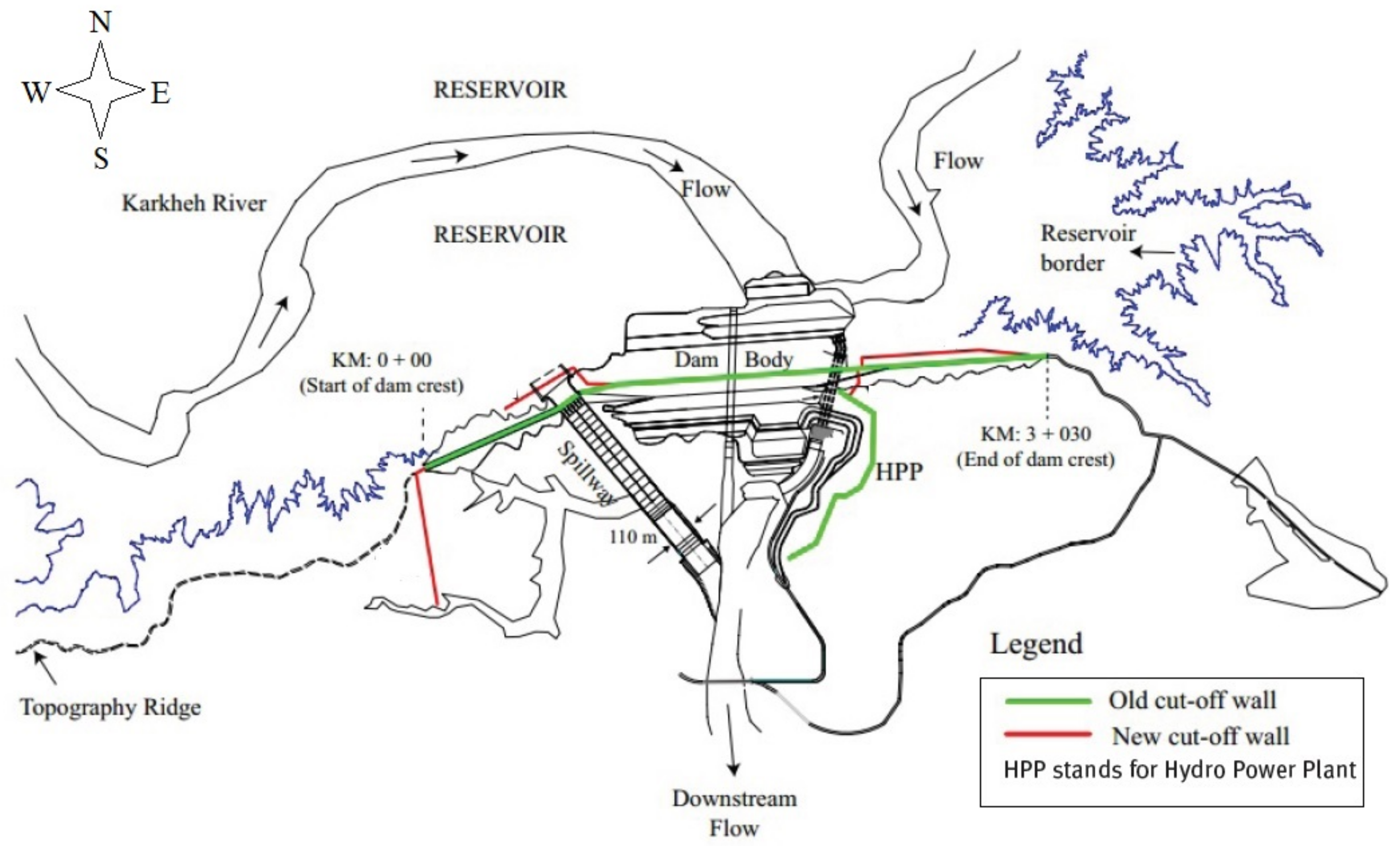
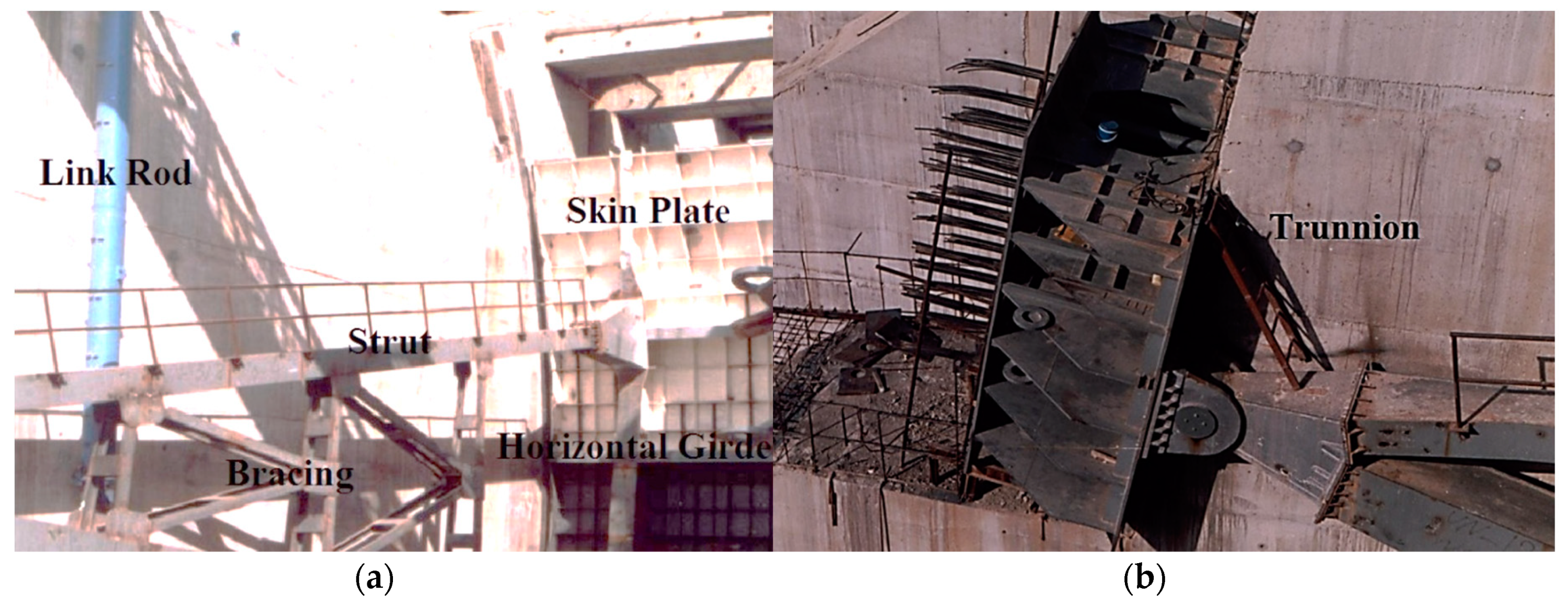
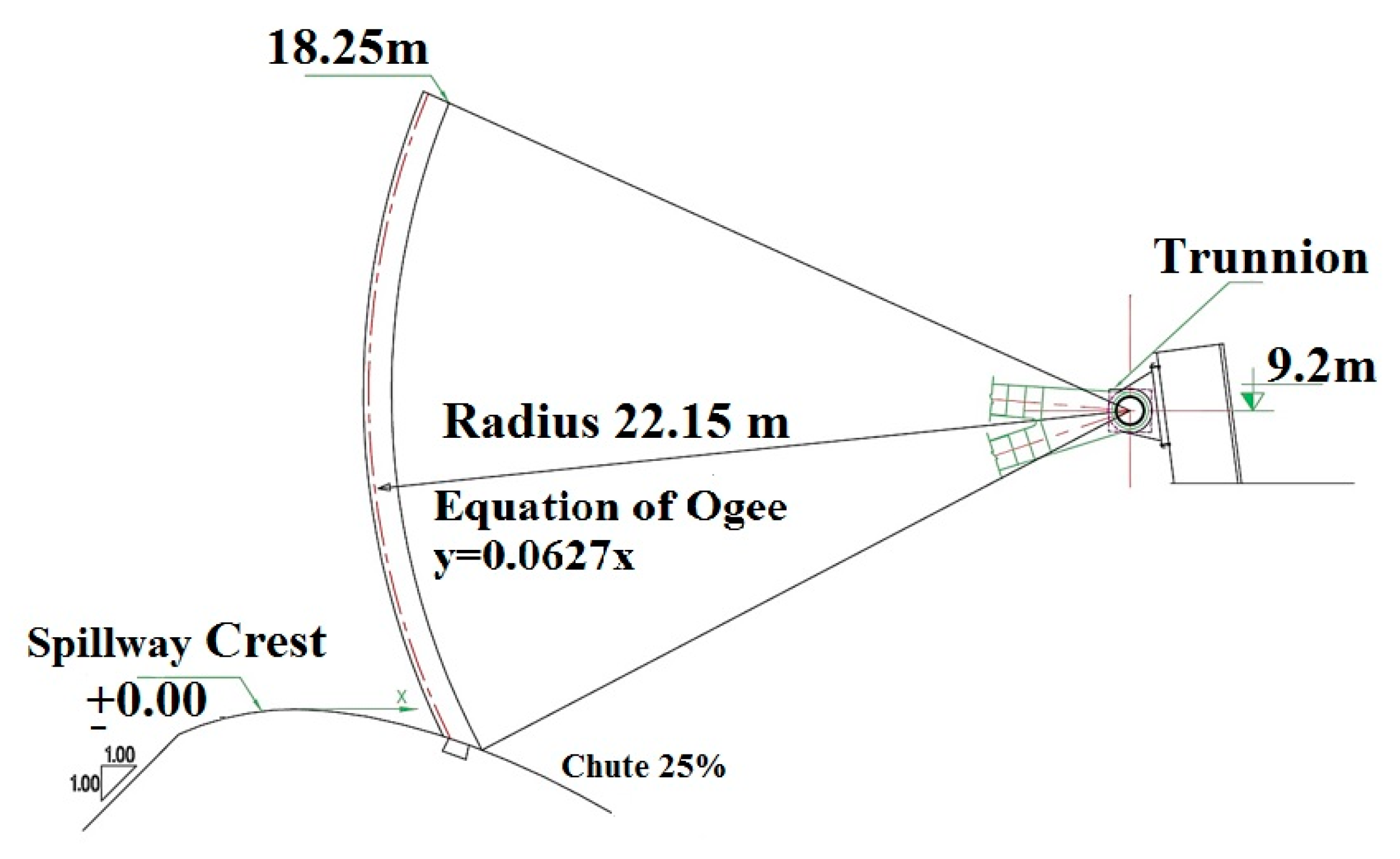

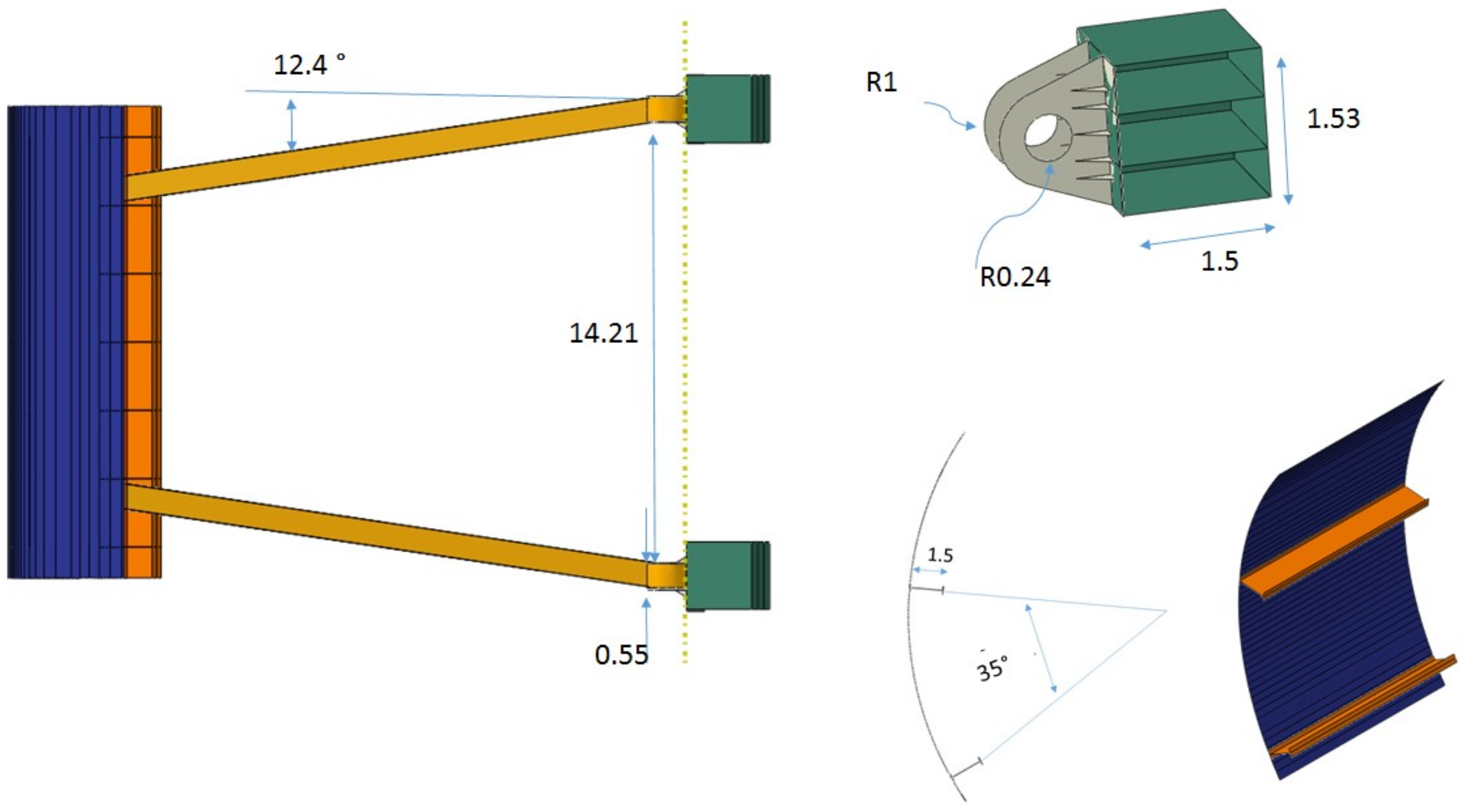
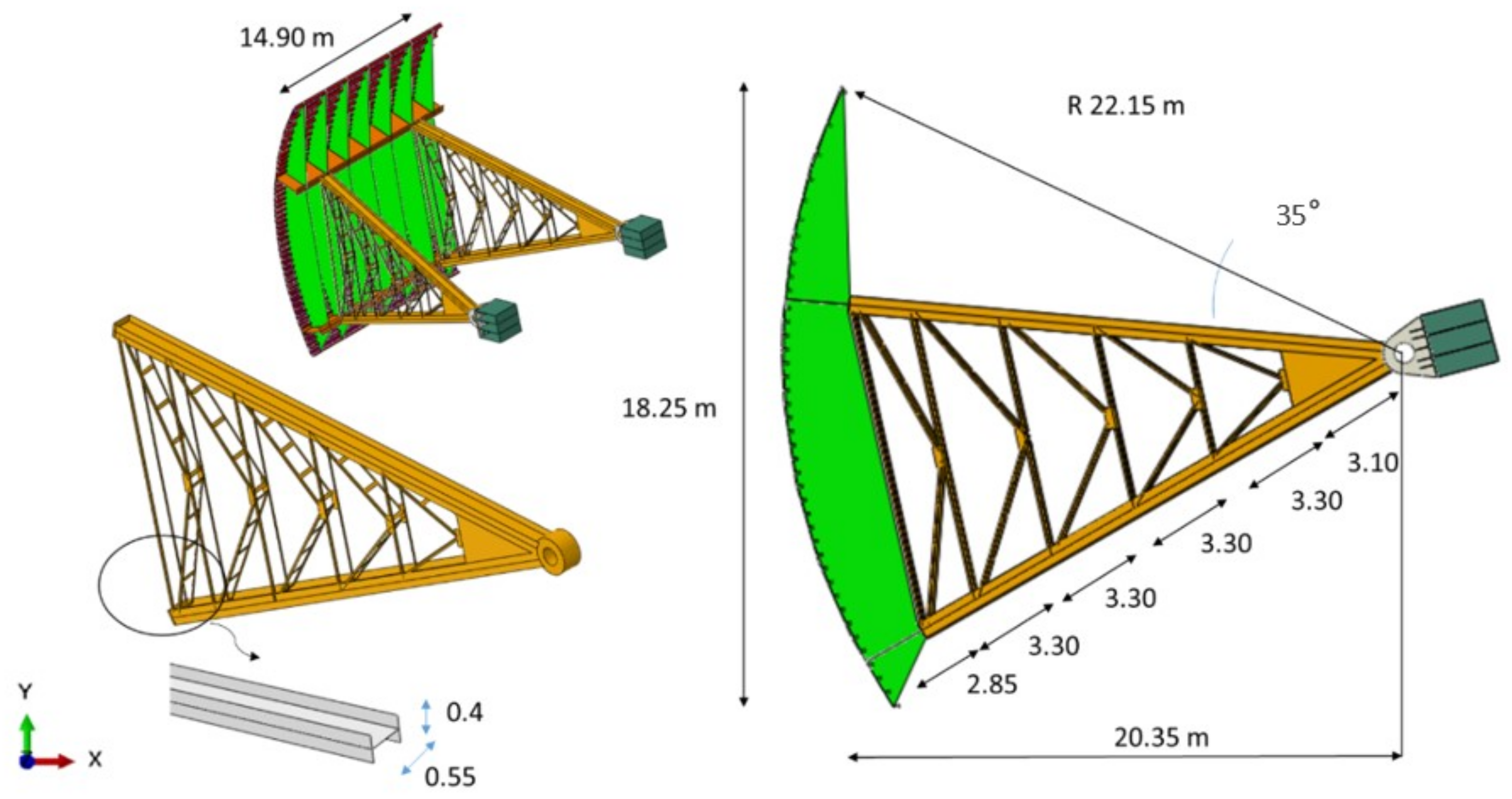
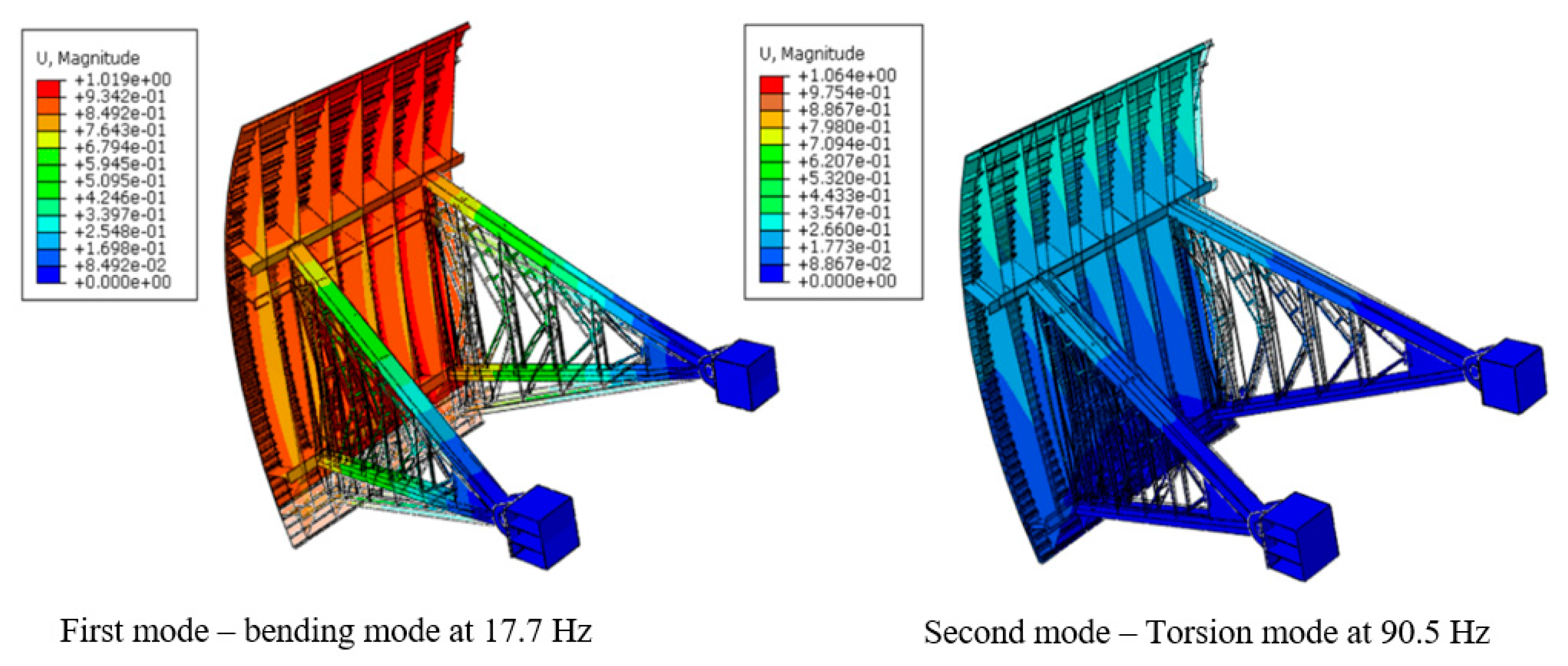
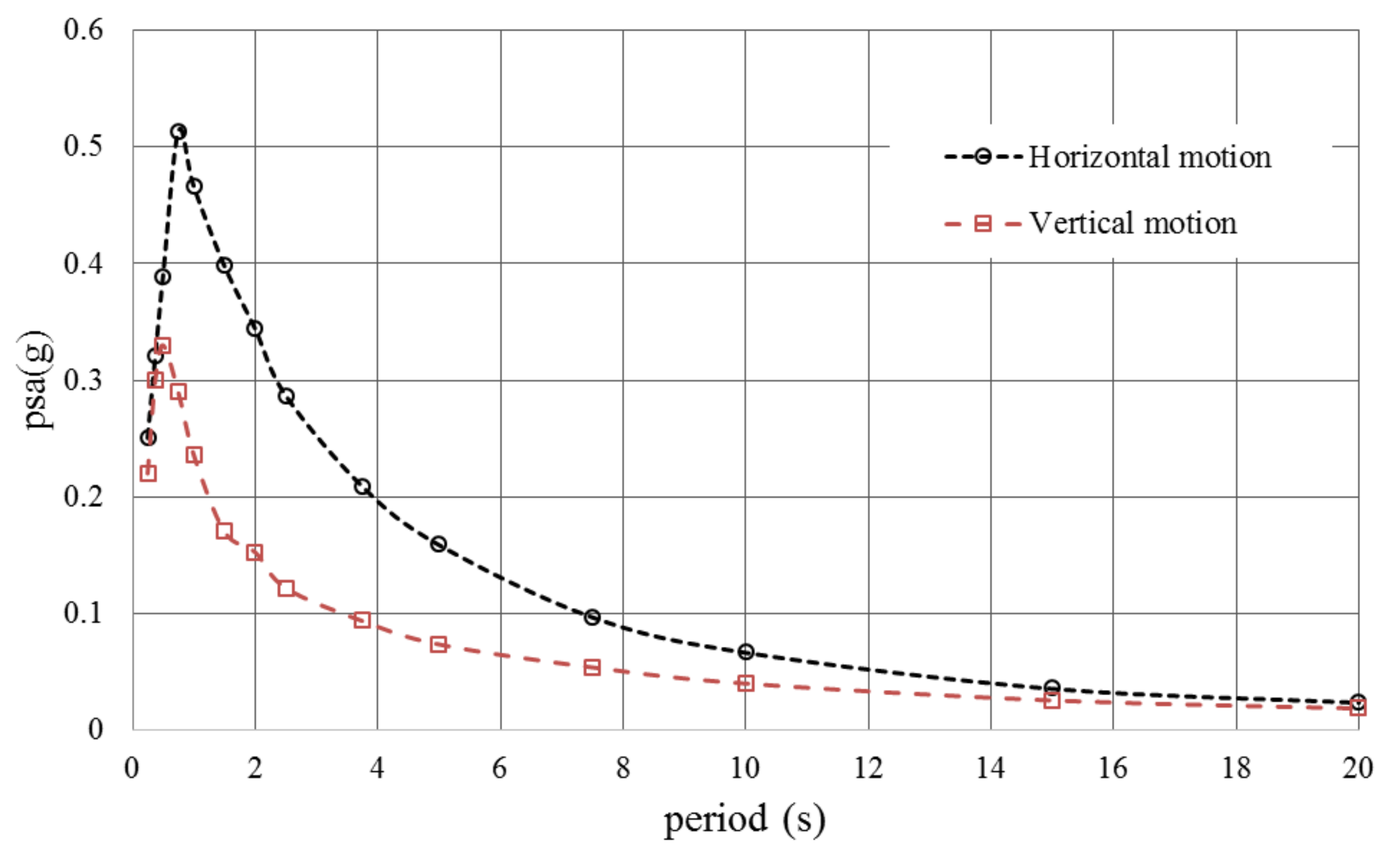
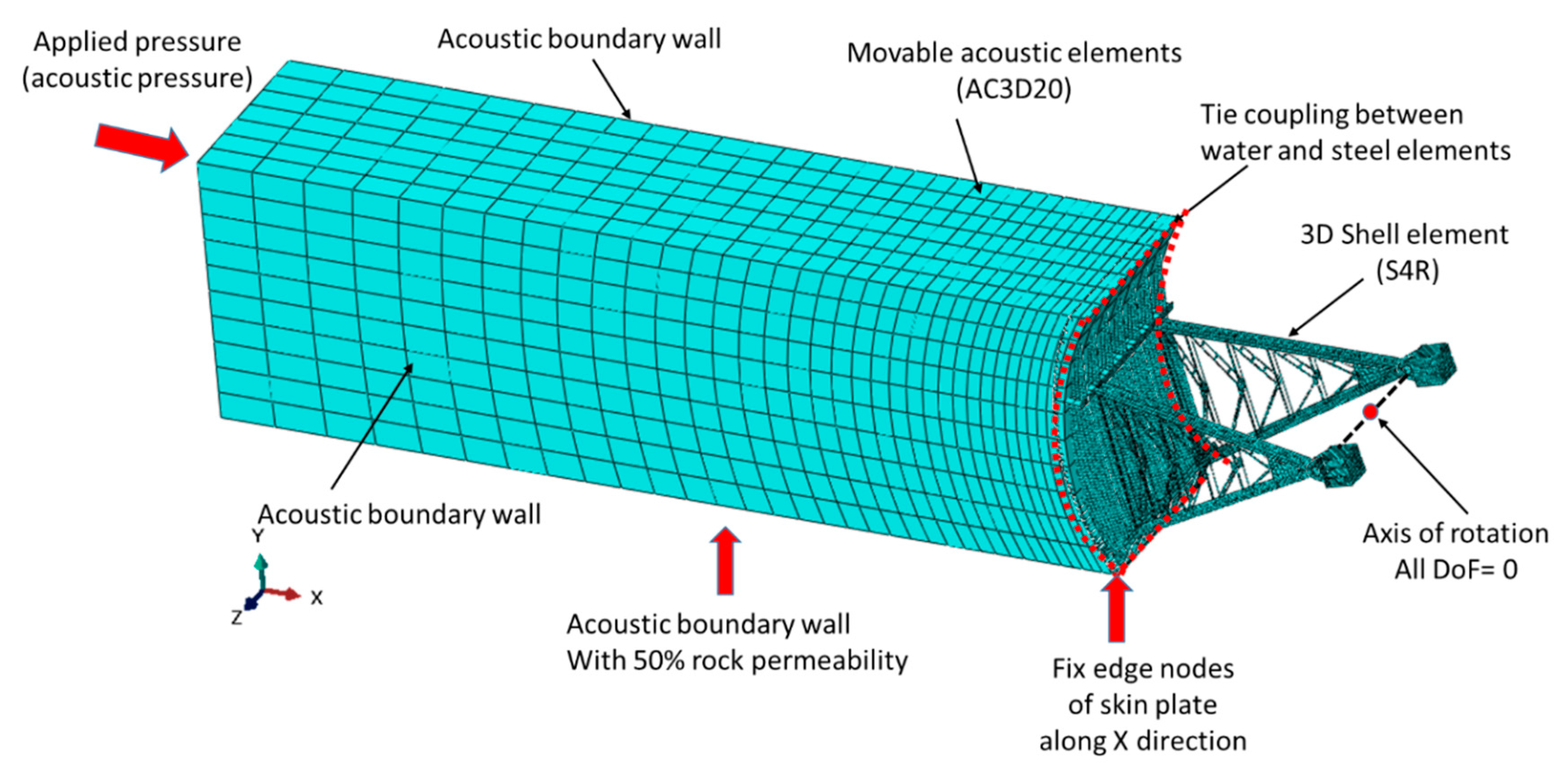
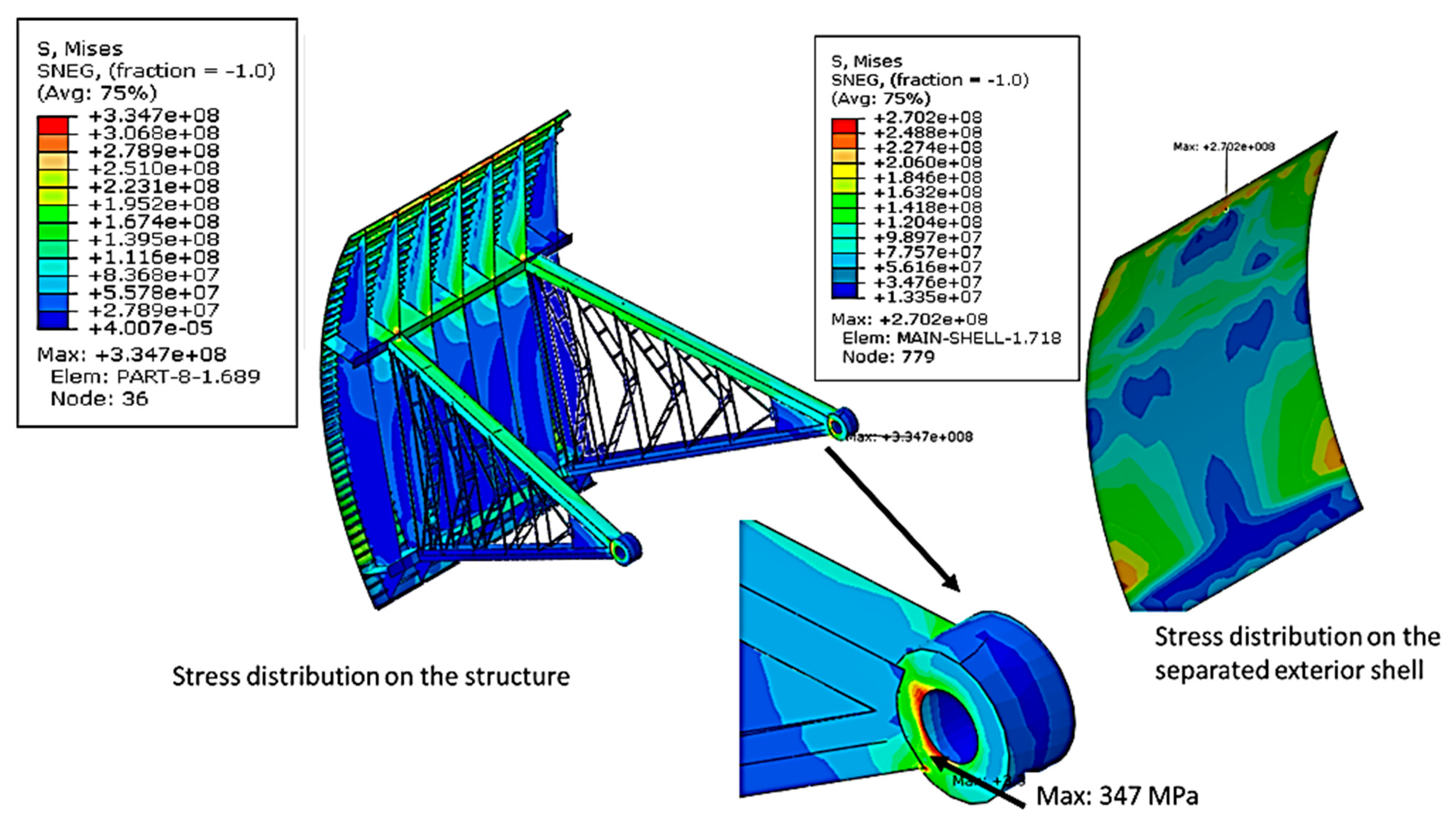
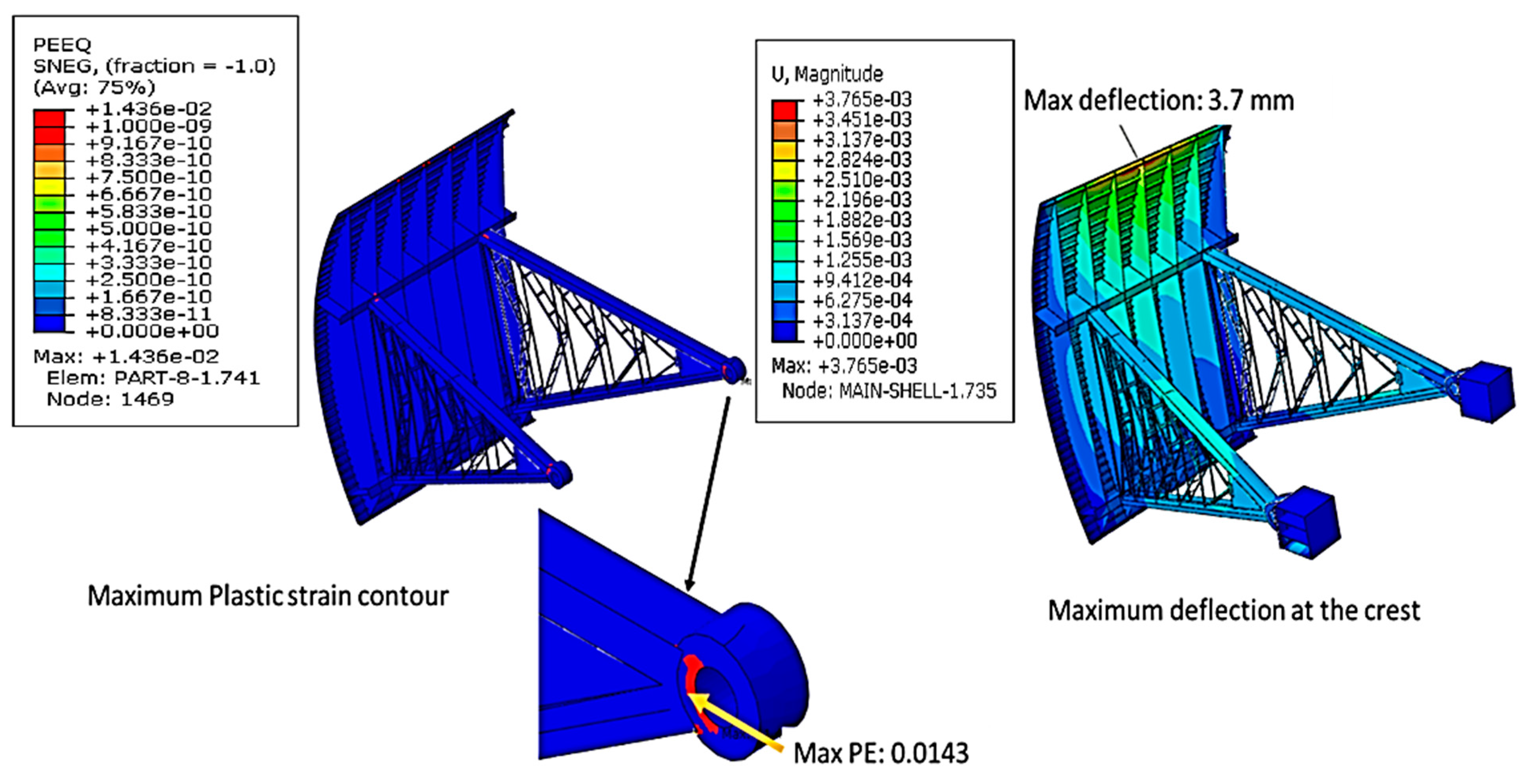
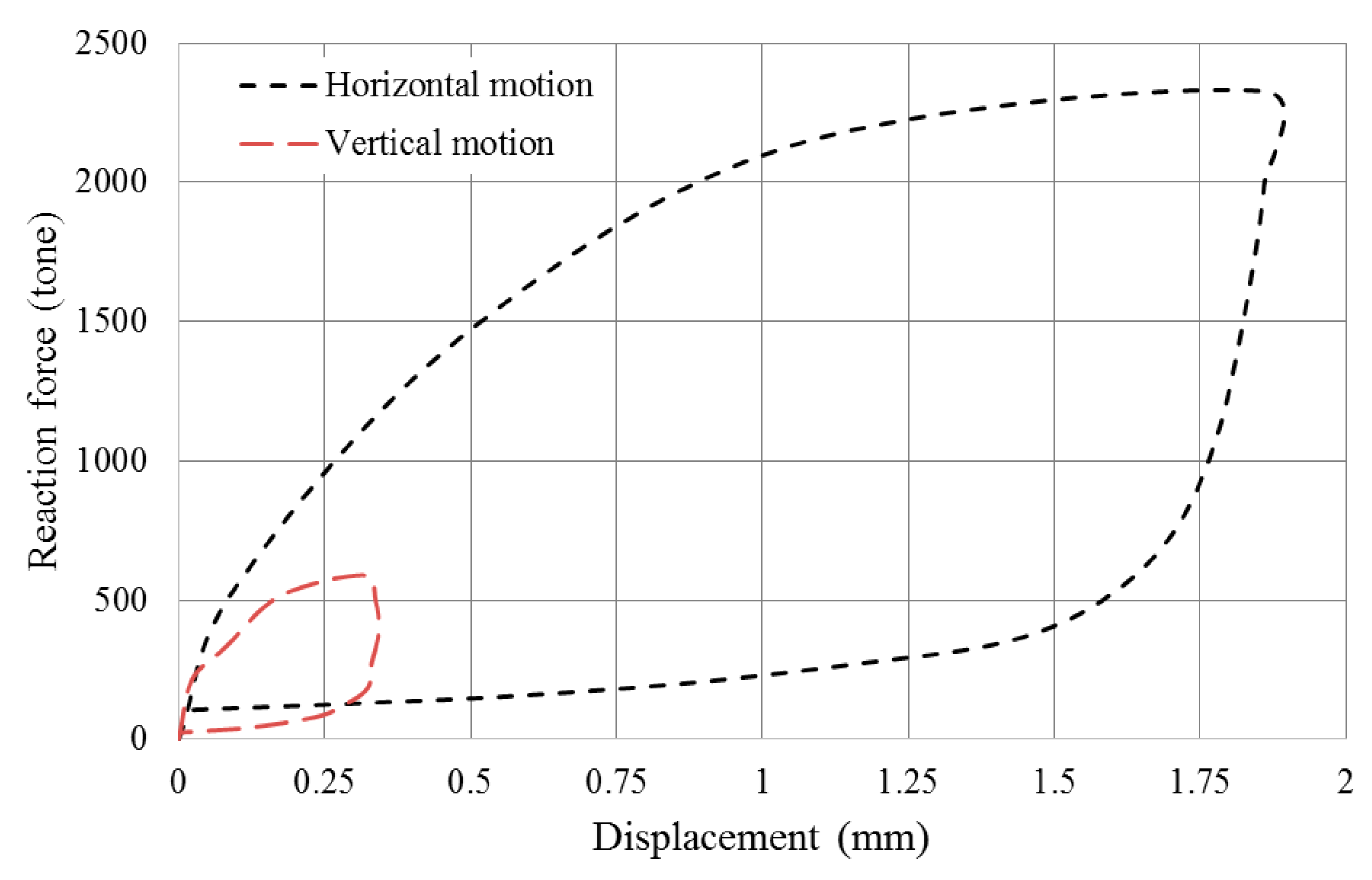
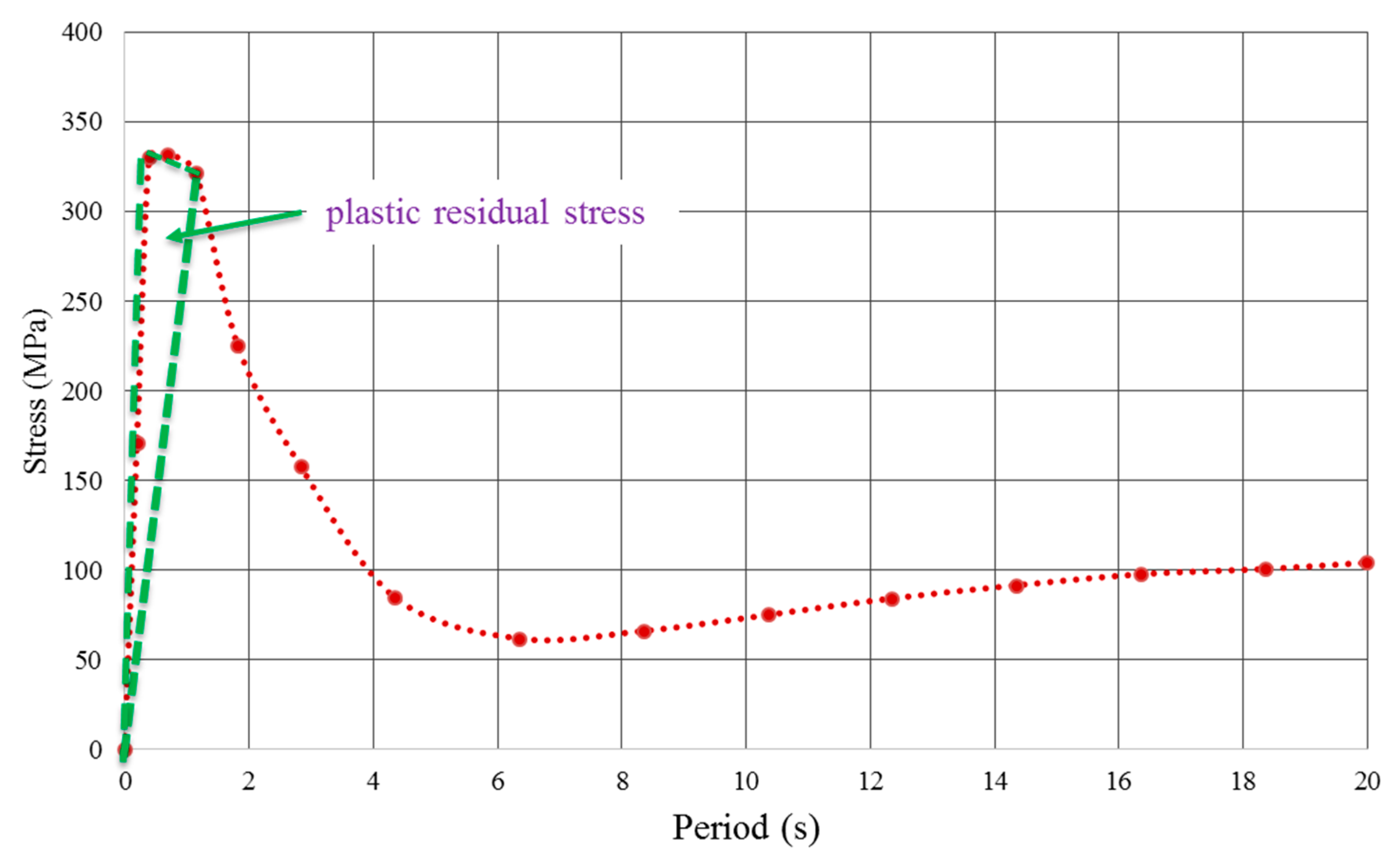
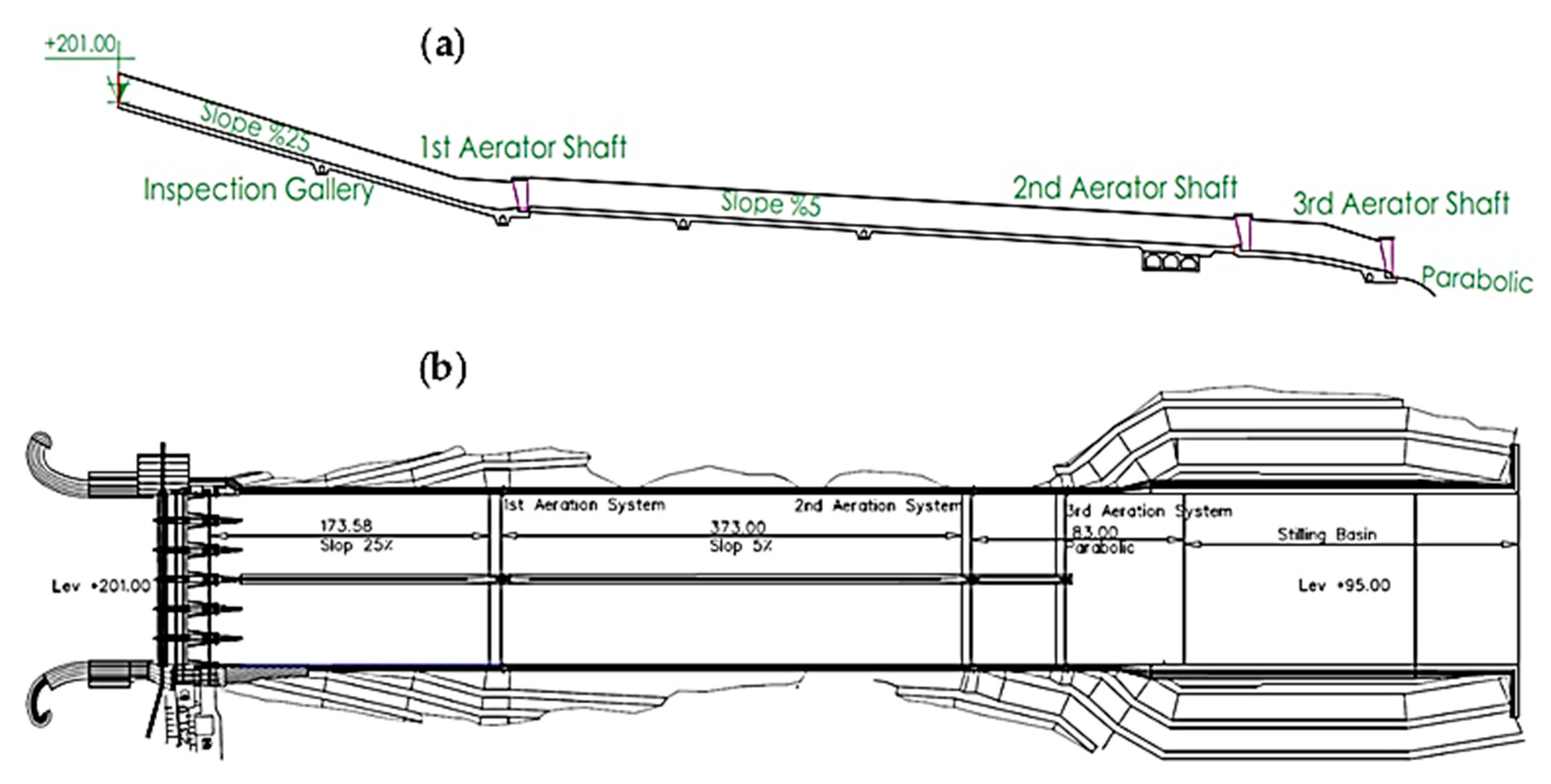
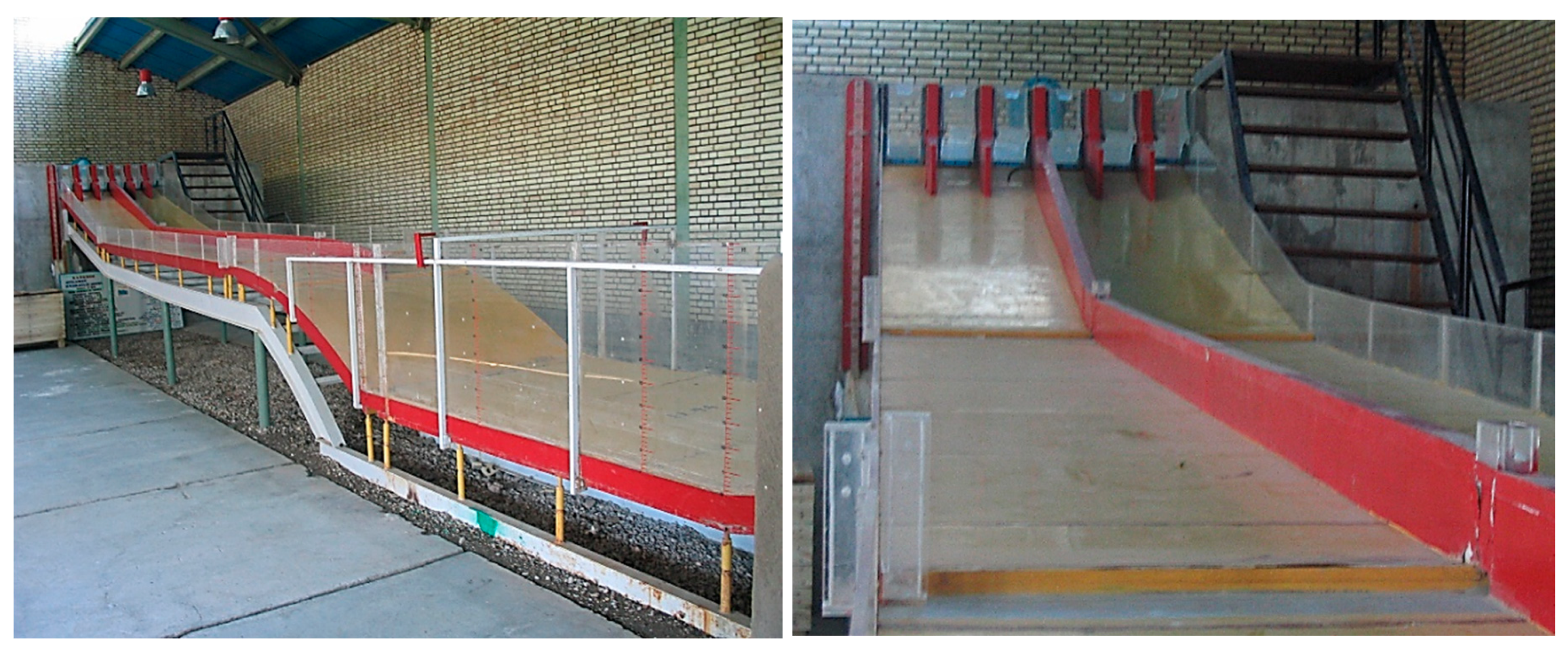

| Seismic Design Level | Return Period (in Years) | Maximum Peak Ground Acceleration (g) | |
|---|---|---|---|
| Horizontal (PGA H) | Vertical (PGA V) | ||
| Design Base Level (DBL) | 500 | 0.29 | 0.18 |
| Maximum Design Level (MDL) | 1000 | 0.39 | 0.27 |
| Maximum Credible Level (MCL) | Deterministic | 0.54 | 0.44 |
| Density (kg/m3) | Elastic Modulus (GPa) | Initial yield Stress (MPa) | Ultimate yield Stress (MPa) | Strain Hardening Coefficient | Failure Strain (%) |
|---|---|---|---|---|---|
| 7850 | 210 | 330 | 460 | 0.25 | 33 |
| Horizontal Hydrostatic Pressure (FHS) | Vertical Hydrostatic Pressure (FVS) | Resultant of Hydrostatic Forces (FRS) | Angle with Horizon | Equivalent Hydrostatic Pressure (PHS) | Design Basic Level (DBL) PGA = 0.29 g | Maximum Credible Level (MCL) PGA = 0.54 g | ||
|---|---|---|---|---|---|---|---|---|
| FHD Hydro Dynamic Force | Ratio of (FHD − FRS)/FRS | FHD Hydro Dynamic Force | Ratio of (FHD − FRS)/FRS | |||||
| (KN) | (KN) | (KN) | (deg) | (kPa) | (KN) | % | (KN) | % |
| 13,390 | 3130 | 13,760 | 13.2 | 96.89 | 20,390 | 48% | 23,750 | 72% |
| Case | Stress at Trunnion (MPa) | Stress at Skin (MPa) | Stress at Stiffener (MPa) | Plastic Strain % | Maximum Deflection (mm) |
|---|---|---|---|---|---|
| Hydrostatic | 269 | 101.2 | 208.4 | 0 | 1.9 |
| Hydrodynamic (144 years period) | 310 | 139 | 287.2 | 0 | 2.6 |
| Hydrodynamic (500 years period) | 331 | 220 | 304 | 0.04 | 3.6 |
| Incident wave | 335 | 320.8 | 330 | 2.7 | 3.75 |
| Level | Cavitation Damage Risk | Flow Velocity (m/s) | Cavitation Index |
|---|---|---|---|
| 1 | No cavitation damage | ||
| 2 | Possible cavitation damage | ||
| 3 | Cavitation damage | ||
| 4 | Serious damage | ||
| 5 | Major damage |
| Cavitation Index on the Floor Downstream of the Aerator | Air Concentration on the Floor Downstream of the Aerator | Air Velocity in Aerator Duct | Air Entrainment | Difference between the Atmosphere and Air Pressure in Aerator Duct | Water Jet Length | Flow Depth in Aerator Duct | Flow Velocity in Aerator Duct | Spillway Discharge |
|---|---|---|---|---|---|---|---|---|
| ( | ( | ( | ( | ( | ( | ( | ||
| First Aeration System | ||||||||
| 0.30 | 46.50 | 43.40 | 1736 | 0.197 | 23.10 | 0.70 | 26.95 | 2000 |
| 0.317 | 18.10 | 66.10 | 2644 | 0.457 | 30.80 | 3.50 | 32.3 | 12,000 |
| Second Aeration System | ||||||||
| 0.51 | 34.20 | 36.10 | 1042 | 0.071 | 18.70 | 0.92 | 20.51 | 2000 |
| 0.23 | 23.70 | 93.20 | 3730 | 0.909 | 46.60 | 3.40 | 33.30 | 12,000 |
| Third Aeration System | ||||||||
| 0.43 | 33.50 | 25.20 | 1006 | 0.062 | 15.30 | 0.86 | 21.94 | 2000 |
| 0.18 | 38.40 | 119.10 | 4765 | 1.39 | 49.90 | 3.25 | 34.83 | 12,000 |
© 2020 by the authors. Licensee MDPI, Basel, Switzerland. This article is an open access article distributed under the terms and conditions of the Creative Commons Attribution (CC BY) license (http://creativecommons.org/licenses/by/4.0/).
Share and Cite
Faridmehr, I.; Farokhi Nejad, A.; Baghban, M.H.; Ghorbani, R. Numerical and Physical Analysis on the Response of a Dam’s Radial Gate to Extreme Loading Performance. Water 2020, 12, 2425. https://doi.org/10.3390/w12092425
Faridmehr I, Farokhi Nejad A, Baghban MH, Ghorbani R. Numerical and Physical Analysis on the Response of a Dam’s Radial Gate to Extreme Loading Performance. Water. 2020; 12(9):2425. https://doi.org/10.3390/w12092425
Chicago/Turabian StyleFaridmehr, Iman, Ali Farokhi Nejad, Mohammad Hajmohammadian Baghban, and Reza Ghorbani. 2020. "Numerical and Physical Analysis on the Response of a Dam’s Radial Gate to Extreme Loading Performance" Water 12, no. 9: 2425. https://doi.org/10.3390/w12092425
APA StyleFaridmehr, I., Farokhi Nejad, A., Baghban, M. H., & Ghorbani, R. (2020). Numerical and Physical Analysis on the Response of a Dam’s Radial Gate to Extreme Loading Performance. Water, 12(9), 2425. https://doi.org/10.3390/w12092425








